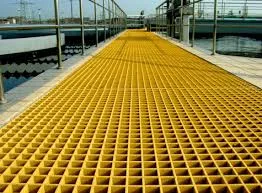
-
 Afrikaans
Afrikaans -
 Albanian
Albanian -
 Amharic
Amharic -
 Arabic
Arabic -
 Armenian
Armenian -
 Azerbaijani
Azerbaijani -
 Basque
Basque -
 Belarusian
Belarusian -
 Bengali
Bengali -
 Bosnian
Bosnian -
 Bulgarian
Bulgarian -
 Catalan
Catalan -
 Cebuano
Cebuano -
 China
China -
 China (Taiwan)
China (Taiwan) -
 Corsican
Corsican -
 Croatian
Croatian -
 Czech
Czech -
 Danish
Danish -
 Dutch
Dutch -
 English
English -
 Esperanto
Esperanto -
 Estonian
Estonian -
 Finnish
Finnish -
 French
French -
 Frisian
Frisian -
 Galician
Galician -
 Georgian
Georgian -
 German
German -
 Greek
Greek -
 Gujarati
Gujarati -
 Haitian Creole
Haitian Creole -
 hausa
hausa -
 hawaiian
hawaiian -
 Hebrew
Hebrew -
 Hindi
Hindi -
 Miao
Miao -
 Hungarian
Hungarian -
 Icelandic
Icelandic -
 igbo
igbo -
 Indonesian
Indonesian -
 irish
irish -
 Italian
Italian -
 Japanese
Japanese -
 Javanese
Javanese -
 Kannada
Kannada -
 kazakh
kazakh -
 Khmer
Khmer -
 Rwandese
Rwandese -
 Korean
Korean -
 Kurdish
Kurdish -
 Kyrgyz
Kyrgyz -
 Lao
Lao -
 Latin
Latin -
 Latvian
Latvian -
 Lithuanian
Lithuanian -
 Luxembourgish
Luxembourgish -
 Macedonian
Macedonian -
 Malgashi
Malgashi -
 Malay
Malay -
 Malayalam
Malayalam -
 Maltese
Maltese -
 Maori
Maori -
 Marathi
Marathi -
 Mongolian
Mongolian -
 Myanmar
Myanmar -
 Nepali
Nepali -
 Norwegian
Norwegian -
 Norwegian
Norwegian -
 Occitan
Occitan -
 Pashto
Pashto -
 Persian
Persian -
 Polish
Polish -
 Portuguese
Portuguese -
 Punjabi
Punjabi -
 Romanian
Romanian -
 Russian
Russian -
 Samoan
Samoan -
 Scottish Gaelic
Scottish Gaelic -
 Serbian
Serbian -
 Sesotho
Sesotho -
 Shona
Shona -
 Sindhi
Sindhi -
 Sinhala
Sinhala -
 Slovak
Slovak -
 Slovenian
Slovenian -
 Somali
Somali -
 Spanish
Spanish -
 Sundanese
Sundanese -
 Swahili
Swahili -
 Swedish
Swedish -
 Tagalog
Tagalog -
 Tajik
Tajik -
 Tamil
Tamil -
 Tatar
Tatar -
 Telugu
Telugu -
 Thai
Thai -
 Turkish
Turkish -
 Turkmen
Turkmen -
 Ukrainian
Ukrainian -
 Urdu
Urdu -
 Uighur
Uighur -
 Uzbek
Uzbek -
 Vietnamese
Vietnamese -
 Welsh
Welsh -
 Bantu
Bantu -
 Yiddish
Yiddish -
 Yoruba
Yoruba -
 Zulu
Zulu
Exploring the Benefits of FRP Cover in Modern Construction Applications
Understanding FRP Cover A Comprehensive Overview
Fiber Reinforced Polymer (FRP) cover is an innovative solution widely used in construction and civil engineering due to its unique properties and advantages. FRP materials, made from a polymer matrix reinforced with fibers, such as glass, carbon, or aramid, offer exceptional strength-to-weight ratios, corrosion resistance, and durability. These characteristics make FRP cover an ideal choice for a variety of applications, including infrastructure and industrial settings.
Understanding FRP Cover A Comprehensive Overview
Another advantage of FRP cover is its lightweight nature. Compared to steel and concrete, FRP is considerably lighter, making it easier and less expensive to transport and install. This reduction in weight can lead to lowered construction and installation costs, as well as reduced stress on existing structures during upgrades or renovations. Additionally, the ease of handling FRP materials allows for quicker project completion times, enhancing overall efficiency.
frp cover

FRP cover is also known for its versatility. It can be molded into various shapes and customized to fit specific project requirements. This adaptability means that engineers can design structures that are not only functional but also aesthetically pleasing. The availability of different colors and finishes allows FRP cover to be integrated seamlessly into any architectural design.
Safety is another critical aspect of FRP cover. Materials used in FRP production often have low thermal conductivity and non-combustible properties, providing better fire resistance than traditional materials. This feature is crucial for ensuring the safety of occupants in buildings and facilities.
In conclusion, FRP cover represents a significant advancement in construction materials, offering a combination of durability, lightweight properties, versatility, and safety. As the construction industry continues to evolve, integrating more sustainable and resilient solutions, FRP cover will likely play an increasingly important role in future infrastructure projects. By understanding the benefits and applications of FRP, industry professionals can harness its potential to create safer and more enduring structures.









